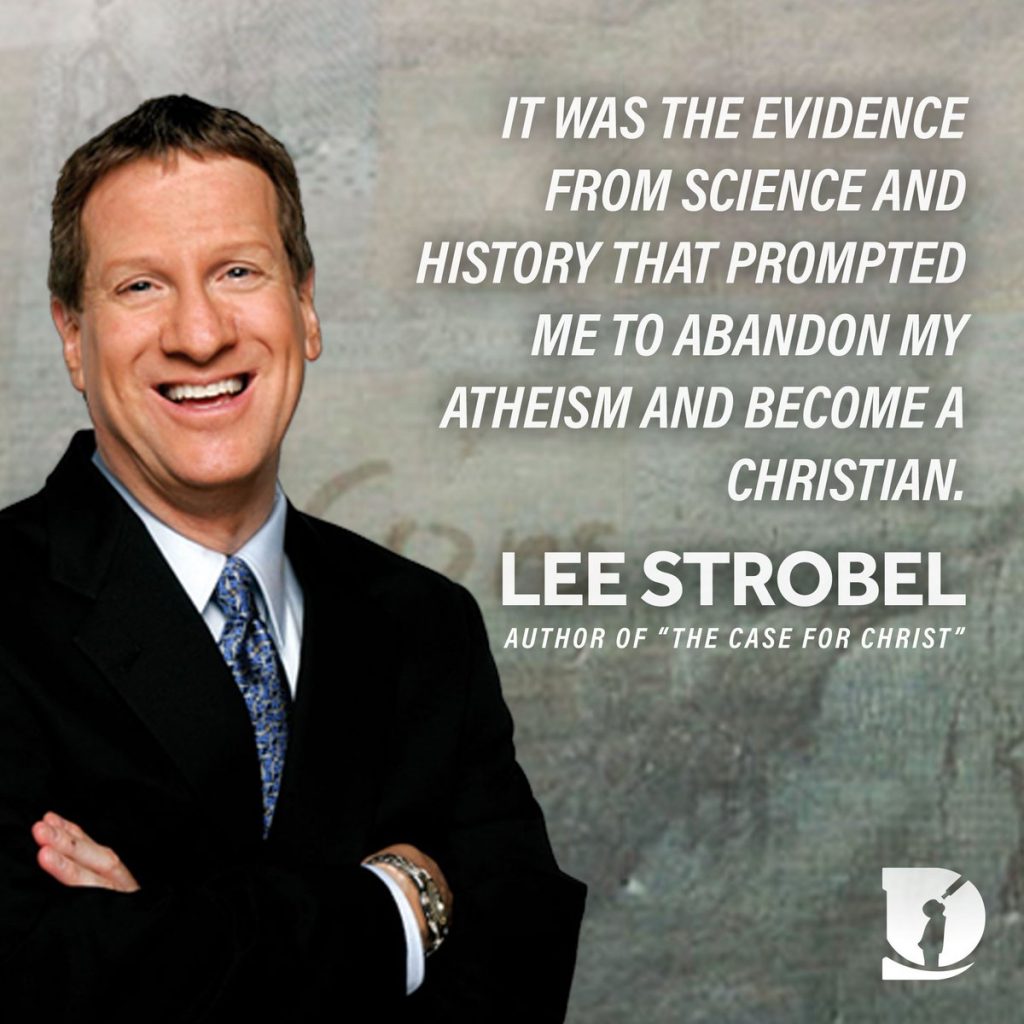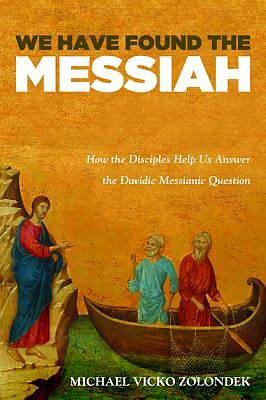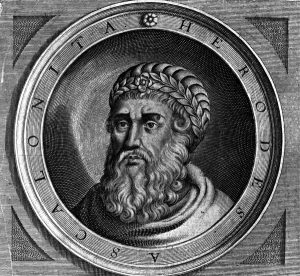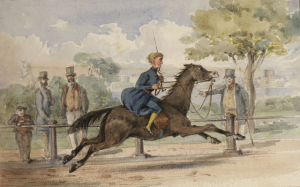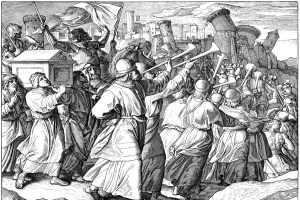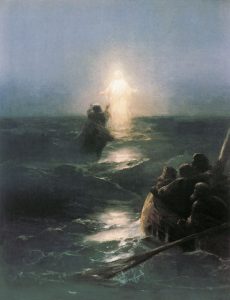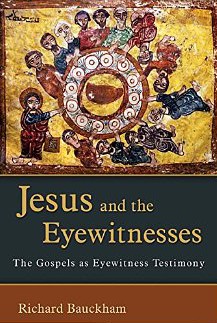Critique of the Gospel History of the Synoptics
by Bruno Bauer
Volume 3
—o0o—
333
§ 95.
The report of the fourth.
John 20, 21.
Not only do the contradictions which theology thought it would have to spend the whole of history dealing with to the end of the world resolve themselves easily and without effort, but they also resolve themselves without much loss of time as soon as the true key is found – a proof that mankind will no longer need to spend much time – – no! at all on these things.
In the fourth Gospel, the women no longer watch Jesus being buried — the fourth, as has been noted, has advanced them by a few lines; Nicodemus and Joseph already embalm the corpse so abundantly – with a hundred pounds of aloes and myrrh — that the women have nothing left to do the next day after the Sabbath – – so they stay at home. The fourth sends only the Magdalene to the tomb; he must send a woman to the tomb so that the matter may be initiated at all, he sends only one because the others are superfluous and also disturbing for the elaboration of the contrasts which the evangelist has in mind for the following conversation of Jesus with Mary.
Mary Magdalene finds the stone taken from the tomb and immediately runs — why only to these two? — to Peter and to the other disciple whom Jesus loved, and told them that the stone had been taken from the tomb. She suspected the enemies of what Matthew’s priests had imposed on the disciples out of malice, but the outcome disproves their assumption.
334
She runs to Peter because the fourth reads in Luke’s writing that Peter ran to the grave at the women’s message. He has to do the same here, except that the Fourth makes him run a noble race with the other disciple. Already their walk to the tomb is a race, they both run together, but the other disciple arrives first, bends over — like Luke’s Peter to see into the tomb, and sees the linen lying there, but does not go in. Peter also arrives, goes in and sees – so that he also sees something special! O, wonderful discovery! — He sees the linen lying there and the face-cloth that was on Jesus’ head, not – no, not! — lying with the linen, but — oh, how important! how great! how glorious! – but wrapped together on one side in a special place. “The great Peter! And yet how small! His glory is only that he first went into the tomb and saw the face-cloth, but — he thought nothing of it! He did not know how to appreciate his find. Only the other disciple, who now also went into the tomb and now also saw the face-cloth, believed – as Luke’s Peter wondered at the incident.
Well, if he believed, why not Peter? Why not Mary Magdalene, who is now suddenly standing by the tomb again and weeping? She must not yet believe for the sake of the following contrasts. She must first see the angel or the two. She does indeed see Luke’s two, but the fourth – oh, how symmetrical! – places the one at the head, the other at the feet where Jesus had lain. But why must Mary be here again? The two angels did not answer her complaints, saying that Jesus’ body had been taken away. She has to come back to the tomb – how clumsy! – because the fourth reads in Matthew’s scripture that Jesus appeared to the women as they were going away from the tomb. Yes, but that is something else; that is at least an external connection; but the last trace of connection disappears, we lose sight and hearing when Mary, after walking back to the city, suddenly stands at the tomb again.
335
The tasteless web of contrasts, where Mary, when she expresses her complaint to the two angels, looks around and sees Jesus but does not recognize him, mistaking him for the gardener – of the garden created by the fourth gospel – asking if he – imagine! – has taken the body away, recognizing Jesus only when he calls her by name “Mary!”, and Jesus saying “Do not hold on to me, for I have not yet ascended to the Father,” these contrasts fall to the ground before any human eye. The last one is not even properly developed and is only explainable from the scripture of Matthew, which is not taken from it, but only the assumption of this page is silently derived from it. In fact, the women of Matthew approach Jesus and worship him, embracing his feet.
Matthew’s Jesus does not forbid them to worship at all, but only tells them not to be afraid, nor to endure, but rather to bring the good news to the disciples.
Suddenly and mysteriously, Luke’s Jesus appears in Jerusalem in the midst of the hurrying people, calling out “Peace!” to them, and when they are frightened, shows them his wounds with the words: “Touch me and see!
From this, the fourth gospel has made the story that Jesus – correctly! – suddenly appears among the disciples late in the evening of the same day, with locked doors, saying “Peace be with you” and showing them his wounds. But contrasts! Contrasts! The fourth gospel wants them. So this time, he only breathes on the disciples and gives them the Spirit through this breath – as he promises them the power from above at the same occasion in Luke – and thereby also gives them the power of forgiveness of sins (– Matthew 18:18).
But the contrasts! the contrasts! Thomas was not present this time. Therefore, after eight days, Jesus must appear once again because Thomas, in the meantime, had proven himself to be unbelieving against the report of his brothers, so that the previously omitted feature of touching could be supplied and Thomas could have the desired opportunity to touch the resurrected one. Poor Thomas! What has he suffered so far! *)
*) The assumption that Jesus had to fight with those who doubted the reality of His person, is very clumsily brought up by Matthew – and only in a few words – when he brings it up in C. 28, 17 at the only meeting of Jesus with the disciples and even at the same moment he lets some doubt that the disciples worshipped Jesus at all. Under these circumstances, since we do not know where some of them came from, Matthew’s account must have become as confused as it has in fact become. Only Luke’s account is coherent: first the disciples doubt, then they are taught, and afterwards, when the Lord departs from them, they worship Him.
336
But doesn’t Luke also tell the story that Jesus ate to prove his reality back then? Patience! The fourth gospel also reads in the scriptures of Mark and Matthew that Jesus met with the disciples in Galilee? Patience! The fourth gospel seems to end his writing right after the Thomas section (Chapter 20, verses 30-31), when he says: “Jesus performed many other signs in the presence of his disciples, which are not recorded in this book. But these are written that you may believe that Jesus is the Messiah, the Son of God, and that by believing you may have life in his name.” The fourth gospel was impatient; he connected this reflection too early to the saying, “Blessed are those who have not seen and yet have believed.” As we are used to seeing from him, he made a mistake and will continue in his laborious and disconnected manner soon enough. But haven’t the greatest theologians proven that Chapter 21 is spurious and written by a later hand? We have proven, on the other hand, where the fourth gospel took his material from: from his imagination and from the writings of the Synoptics. We saw that he copied Luke everywhere – if one were to strike out as spurious what is borrowed from Luke, without lamenting the loss, this gospel would have to be struck out from the beginning, from the questioning of John until the end, with a mighty cross. The fourth gospel has just copied from Luke again: well then! He is now also copying what he had not yet copied last: he lets Jesus eat with the disciples, by letting him appear before the disciples in Galilee out of obedience to Mark and Matthew. He lets him appear before them at the Sea of Galilee because he believed he could bring in Luke’s story of Peter’s fishing here. He lets Peter be instructed with the office of the chief shepherd on this occasion because he reads in Luke that Peter should strengthen and establish his brothers, he brings this investiture of Peter here because it seemed to him to be a fitting conclusion for his writing and (according to Matthew) the laying of the foundation for the building of the Church. Finally, he could bring in a contrast here, which made it possible for him to mention “the other disciple” and to assure that he wrote the gospel of the heart.
337
It is no longer worth the trouble to point out how shapeless and inhuman the elements of the original report have become under the hand of the Fourth – for this reason alone it is not worth the trouble, since we have already proved how unsubstantial and vapour-like these elements all are already in the original report, in Luke’s report. What, then, they had to become under the hand of the Fourth! The disciples, among them Peter and the two sons of Zebedee, had spent the night casting their nets in vain on the lake: there stands Jesus on the shore! on the shore! they do not know him, like the disciples of Emmaus, and he asks them: Children, have you nothing to eat? — — — No! we avert our gaze from it for ever and ever!
Only the question remains, who is the “other”, the favourite disciple who wrote the Gospel? It is not John! He is hidden among the “two others” whom the Fourth mentions next to the sons of Zebedee (C. 21,2). The fourth man would have been so clever that he would not have mentioned the two Zebedees in this context and next to the unnamed one, if he had the Scriptures of Luke open in front of him, read the names of the two Zebedees here (C. 5, 10) and if he wanted the beloved disciple and author of the Gospel to be understood as John. In the very late time when the Fourth wrote, it was well known among the believers who the Zebedees were, and the Fourth should not have considered it even in one of his unguarded moments? Impossible!
338
But (parenthetically!) did he really write the last verses of his Scripture (C. 21, 24. 25)? Is not the assertion that Jesus did so much that, if one wanted to write it in one, the world would not contain all the books, a too conspicuous repetition of the early! Is it not too striking a repetition of the early conjecture (C. 20, 30) that Jesus had done many other signs? It is rather an exaggerated repetition, which can only belong to the fourth – or one would have to refute our whole previous work! – can belong to. But he says: “and we know that his testimony is true”? Well? doesn’t he say a moment later: “I mean, the world would not contain the books.” The Fourth (Gospel) loves such hyperboles, as we have already seen above in Chapter 19, verse 35, where he so excellently knows how to set up testimonies for himself. In this, as in everything else, he is lacking in restraint, and awkward, because he excessively exaggerates.
The other is also not, as Lützelberger thinks, Andrew, who together with an unnamed person is at the same time the first to follow Jesus (C. 1, 37 – 41). The fourth was so clever that he understood that if Andrew was acquainted with the high priest Annas, then Peter was also acquainted with him, and that he did not need to come to the palace of Annas through the mediation of another, the mysterious other. The other is rather the unnamed one next to Andrew, and with diligence the Fourth immediately has the great unknown appear the first time he introduces the disciples of Jesus.
339
So who is he? That would be a fine conclusion to our criticism if we were to be tempted to build hypotheses into the air.
Before we should stray so far, the contest that the unnamed and Peter wage in this Gospel should rather be more human, more sustained, and in general only be worked out to a more definite image. It is certain that the fourth wants to elevate his unnamed one by presenting him as a dangerous rival of Peter, even as a rival who often wins the battle. But what a battle it is and what matters it revolves around! They race against each other “ah the grave, and the quarrel revolves in the end around who sees the linen or the sweatcloths first; the unnamed one must arrange for Peter to enter the palace of Annas, and satisfy Peter’s curiosity about the Master’s fate! If only the Fourth Gospel had left out this competition and conflict! The struggle is in itself terribly petty and insignificant, and in the end so unsuccessful that the Fourth, through Luke and Matthew, is nevertheless forced to bestow the office of shepherd on Peter.
But in the end, the Fourth Gospel still considers Peter significant! He is the one to whom Jesus says: “No! No!” – it is not known when and how and where he said that he should stay until he comes again. And when does Jesus say that he may say this of the unnamed? When the fourth had copied from Luke’s account of Peter’s fishing expedition, now at so late a time, the note that Peter (C. 21:19,20) was told by the Lord to follow him, now that the fourth goes on to say that Peter turns round and stands following the unnamed man, and says to Jesus, “Lord, what shall he do?”– – Lord, what shall he do?
But if the fourth says that from that word of the Lord the opinion was formed that this disciple, the unnamed one, would not die, does he not then refer to a real conception of time? to a legend? Must the unnamed one not then be a certain, known person?
340
How can we still be impressed by a Gospel that is completely dissolved for us?
he Unnamed One is a nebulous figure, a foggy figure formed by the Fourth Gospel itself, and in this respect the Fourth Gospel has actually hit the mark. He first wanted to create the appearance that there was still a Gospel that came from an eyewitness, written directly by such a person. A nebulous figure was the only worthy author of such a scripture, as the Fourth Gospel has delivered.
————
In the Fourth Gospel, the Gospel story confronts us in its highest perfection, in its truth and as a revealed mystery. As a plastic representation of the same ideas, it might seem that the Synoptic Gospels stand above the Fourth, just as the theology of the Church Fathers, the mysticism of the Middle Ages, and the symbolism of the Reformation seem to stand as the plastic, completed forms above the narrowness, lack of content and nihilistic confusion of the new theology. But this is only an illusion. The relative priority of sculpture should not be denied to both, to those ecclesiastical creations and to the Synoptics – actually, if the whole is important, only to Mark. Only this more restrained, tighter form can itself not even be called plastic and human with any real right. Let us see a dogmatic execution of Augustine, Anselm, Hugo, Luther, and Calvin, which would have human form, inner form, support, and true coherence! Just one dogmatic sentence! The monstrosities of narrowness, of staggering contradiction, of stilted obtrusiveness, lie only hidden in the classical works of those men, and only poorly concealed under the deceptive cover of a tighter form. The newer ones, too, are classical if they present us only with narrowness, only with contradiction, only with obtrusiveness, and present it purely as such, without any further content. The newer ones have only peeled out the true kernel when they offer us the obtrusive nothing; they have betrayed the mystery, they are the true classics.
341
Thus the Fourth has betrayed the secret of the Gospel, which we have critically uncovered – a merit that predestined him to become the ideal and idol of the newer classical theologians and has truly made him an idol.
—————

